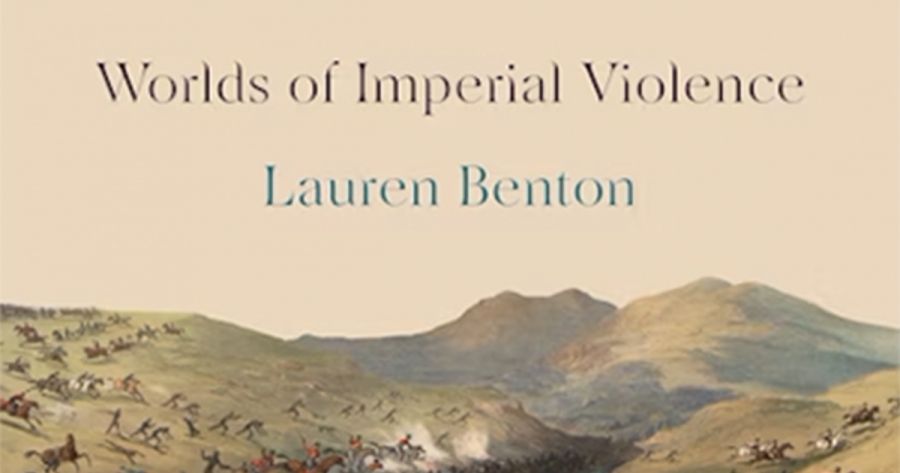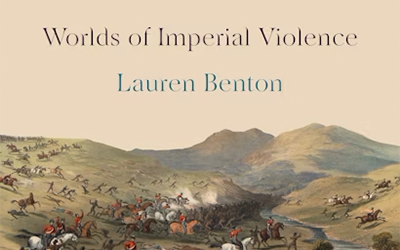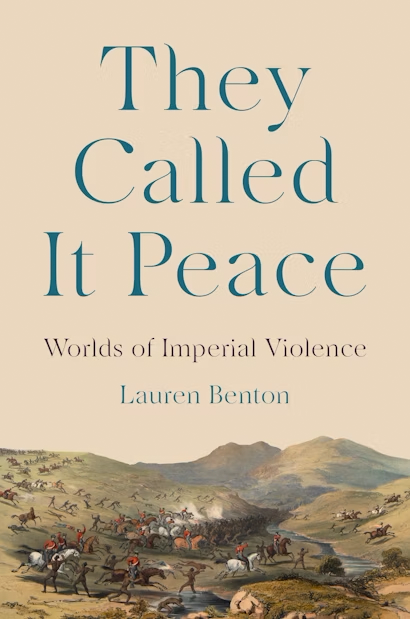
- Free Article: No
- Contents Category: History
- Review Article: Yes
- Article Title: Raid and truce
- Article Subtitle: Private violence and imperial conquest
- Online Only: No
- Custom Highlight Text:
The Australian War Memorial (AWM) is unique among the former settler Dominions in our reluctance to acknowledge as warfare violent conquest and dispossession of Indigenous peoples. The national war museums of Canada, New Zealand, and South Africa all contain exhibits dedicated to military conflicts between First Nations and European colonisers, yet the AWM has for decades refused to heed calls for a frontier war gallery at Mount Ainslie. As veteran journalist David Marr noted earlier this year, while the AWM saw fit a decade ago to memorialise explosive detection dogs and their handlers, ‘we haven’t yet found the space in those halls to commemorate the war that is the basis of our country’s existence’. Kim Beazley, appointed in 2023 to chair the Australian War Memorial Council, recently signalled a shift in direction and has promised that the AWM will soon ‘give the Aboriginal population the dignity of resistance’.
- Featured Image (400px * 250px):

- Alt Tag (Featured Image): Jeremy Martens reviews ‘They Called It Peace: Worlds of imperial violence’ by Lauren Benton
- Book 1 Title: They Called It Peace
- Book 1 Subtitle: Worlds of imperial violence
- Book 1 Biblio: Princeton University Press, US$39.95 hb, 300 pp
- Book 1 Cover Small (400 x 600):

- Book 1 Cover (800 x 1200):

In They Called It Peace, Lauren Benton, a historian at Yale University, offers a heuristic framework to understand imperial ‘small wars’, which she defines as both sustained colonial military campaigns and brief acts of violence motivated by plunder, reprisal, or punishment. At first blush, this book might appear an unlikely guide to Australian frontier warfare, for Benton ranges over five centuries and in geographical spaces as diverse as the Caribbean, the Americas, and South Asia. Only in the final chapter does Australia make an appearance, with a brief analysis of the extreme brutality attending Tasmania’s Black War (1824-32). However, it is precisely this broad scope that enables Australian readers to identify evolving global processes and patterns, and to recognise that our experience of imperialism was not unique. The decades-long and bloody conflict across the continent between settlers and Indigenous Australians bears the distinct hallmark of myriad small wars waged in European empires between the fifteenth and twentieth centuries.
Benton divides her study in two. Part One outlines how imperial conquest in the early modern world instituted a global ‘regime of plunder’. The colonisation of Cuba, Goa, and New England proceeded unevenly, but was characterised by two key practices of imperial violence: raiding and truce-making. Raiding across frontiers enabled soldier-settlers to supplement their agricultural and pastoral activities with purloined property. Once raids and counter-raids became frequent or destructive, the appetite for retribution and plunder was transformed into demands for permanent acquisition and rule of Indigenous territory. Small wars along unstable frontiers regularly generated serial truces and agreements to pay tribute. But truces also set the timing and the terms for a return to warfare; as Benton demonstrates, some of the ‘most spectacular acts of brutality recorded in the early modern world took place in the wake of truces’.
 Australian War Memorial Canberra, 2017 (Kgbo via Wikimedia Commons)
Australian War Memorial Canberra, 2017 (Kgbo via Wikimedia Commons)
In their negotiations with Indigenous leaders, men such as Hernán Cortés, Afonso de Albuquerque, and John Winthrop Jr made it clear that peace could be secured only on European terms, and that a refusal to submit to them would result in renewed warfare. Furthermore, violations of truces were perceived as breaches of honour that justified punitive, juridically protected acts of extreme violence, including massacres. Benton is careful to emphasise the importance of individual households in these processes. The proliferation of settler homes transformed imperial outposts into communities that claimed the right to self-defence and facilitated the transformation of plundered booty into property. Private violence quickly became foundational to imperial conquest and governance.
Part Two of They Called It Peace examines the evolution of imperial violence between 1750 and 1900. Benton argues that in this period European participants in small wars began to formulate legal claims about Europe’s special right to regulate conduct in war. While older justifications for colonial warfare continued to circulate, the new emphasis on European legal authority altered the forms and frequency of imperial violence and gave rise to a global regime that Benton terms ‘armed peace’. Navy captains, army officers, and governors in distant places claimed the right to use military force to protect the lives and property of imperial subjects or to restore order. The punitive violence they directed at Indigenous communities was described as limited and defined as ‘measures short of war’, but paradoxically the regime of armed peace often facilitated the commission of atrocities. Limited operations to protect subjects evolved in an orderly legal sequence into sustained campaigns to protect imperial interests. A pathway was mapped out whereby lawful interventions with modest objectives could then lead to ‘brutal campaigns of dispossession and extermination’, such as those that occurred in New South Wales and Tasmania.
Indigenous communities were never the mere objects of imperial violence. European empire builders vacillated between characterising Indigenous resisters as rebellious subjects in need of policing and punishment, and claiming they were members of sovereign political communities engaged in lawful warfare. However, in defending their lands and livelihoods from European aggression, Indigenous militants made their own distinctions between war and rebellion.
Some leaders insisted on defining imperial violence as inter-political warfare because it enabled them to reinforce their claims to sovereignty. Others presented themselves as loyal subjects in need of imperial protection under the law and sought to negotiate an end to hostilities. In both cases, Indigenous élites rapidly adapted European legal terms and arguments to advance their interests in times of war and peace.
Keith Windschuttle has claimed there was ‘no encounter between whites and blacks anywhere on the Australian frontier that could accurately be described as warfare’. Such violence that did occur bore no resemblance to, for instance, ‘the genuine colonial warfare’ between British settlers and Māori in New Zealand. Such comments reinforce Benton’s conclusion that ‘for centuries the world has worked with an impoverished vocabulary to describe violence at the threshold of war and peace’. The imperial lexicon of protection, emergency, pacification, and ‘measures short of war’ has served to minimise and obscure the brutal reality of Indigenous conquest and dispossession. The lethal violence of small wars, however limited in scope, underpinned imperial regimes of armed peace and characterised settler empires across the globe, including in Australia.


Comments powered by CComment